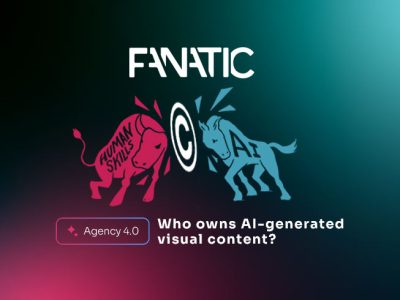October 17, 2025
AI is a controversial topic across many industries, but particularly among those whose work involves creative output. The rise of generative AI tools such as ChatGPT, Midjourney, and Claude has enabled creators, marketers, and businesses to produce content at an alarmingly fast and cost-efficient rate.

Ownership of AI-generated content remains a legal grey area. Unlike traditional work created by humans, content produced solely by AI does not qualify for copyright protection. The U.S. Copyright Office maintains that only works with substantial human authorship are eligible for copyright Reference. However, content that blends AI generation with meaningful human creative input may qualify, depending on the extent of the contribution and your location. In the UK, there may be more flexibility, with some protection granted to the individual directing the AI tool Reference.
If you’re considering creating content entirely with AI and minimal human involvement, it is likely to be considered part of the public domain. This means other businesses could legally reuse, repurpose, or monetise it without your permission.
Another consideration is the training data behind many AI tools. If your AI-generated content closely resembles existing copyrighted material, you could face infringement claims, even if you were unaware of the similarity.
AI offers significant benefits for brand content strategies. It accelerates the production of written, visual, and audio assets, allowing brands to maintain consistent output and stay competitive. However, there are risks. Audiences may perceive AI-generated content as impersonal or low-effort.
Errors or misinformation can erode trust, and irresponsible use of these tools may lead to legal disputes. Content that lacks human refinement often feels generic. This can weaken your brand’s distinctiveness within the industry.
AI is transforming the content creation landscape, but legal protections are still evolving. The Fanatic Creative Team treats AI tools as creative assistants, not standalone creators. By combining the efficiency of AI (for tasks such as removing image backgrounds) with our human creativity, your brand can remain protected, distinctive, and trustworthy in an increasingly automated and visually homogenised world.